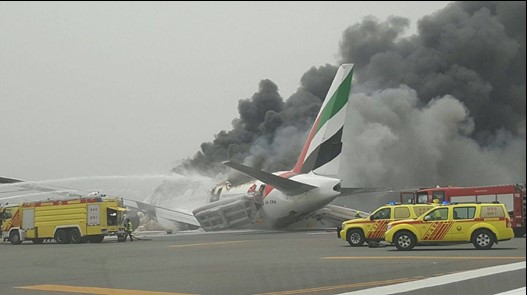Emirates crash probe finds no problems with aircraft systems
07 August, 2017
2 min read
By joining our newsletter, you agree to our Privacy Policy


Air safety investigators probing a fiery Emirates crash a year ago say they have found no evidence of problems with the aircraft’s systems or engines.
The Boeing 777-300 was landing at Dubai International Airport after a flight from Trivandrum International Airport in India on August 3, 2016, when it crashed trying to perform a go-around.
The new interim report by the United Arab Emirates General Civil Aviation Authority boosted the number of reported injuries among passengers and crew from 24 to 30.
It said 21 passengers, one pilot, and four cabin crew sustained minor injuries while four cabin crew were seriously injured.
A firefighter also died from injuries sustained in a fireball when the centre wing fuel tank exploded.
The aircraft landed too far down the runway as a headwind turned into a gradually increasing tailwind and the rear wheels touched down as the crew unsuccessfully attempted the rejected landing.
As the aircraft reached an altitude of 85ft, it began to sink back towards the runway.
Full thrust was applied three seconds before the crash but by the time the engines responded, one second before impact, it was too late.
The rear of the aircraft hit the runway at 125 knots with the nose pitched up and one of the engines was ripped off the wing as the aircraft burst into flames.
The interim statement said that a large number of aircraft systems had been tested with the help of manufacturers.
An analysis of the data downloaded “indicates that there were no aircraft systems or engine abnormalities up to the time of the accident’’.
“Regarding the operation of the flight the investigation is working to determine and analyse the human performance factors that influenced flight crew actions during the landing and attempted go-around,’’ the report said.
“In addition, the Investigation has reviewed and has identified safety enhancements related to the validity of weather information that was passed to the flight crew, and communication between air traffic control and the flight crew.’’
Get the latest news and updates straight to your inbox
No spam, no hassle, no fuss, just airline news direct to you.
By joining our newsletter, you agree to our Privacy Policy
Find us on social media
Comments
No comments yet, be the first to write one.

